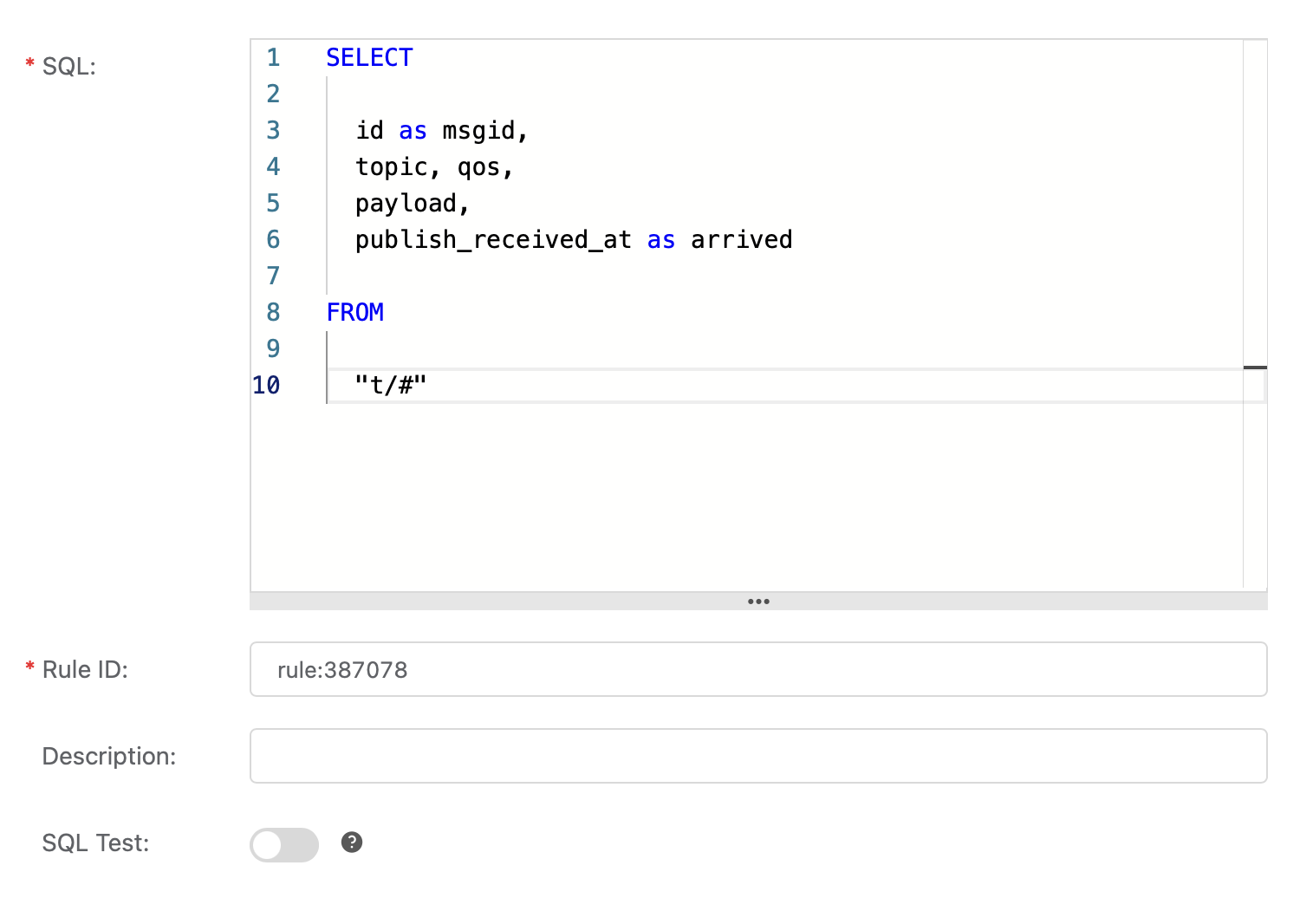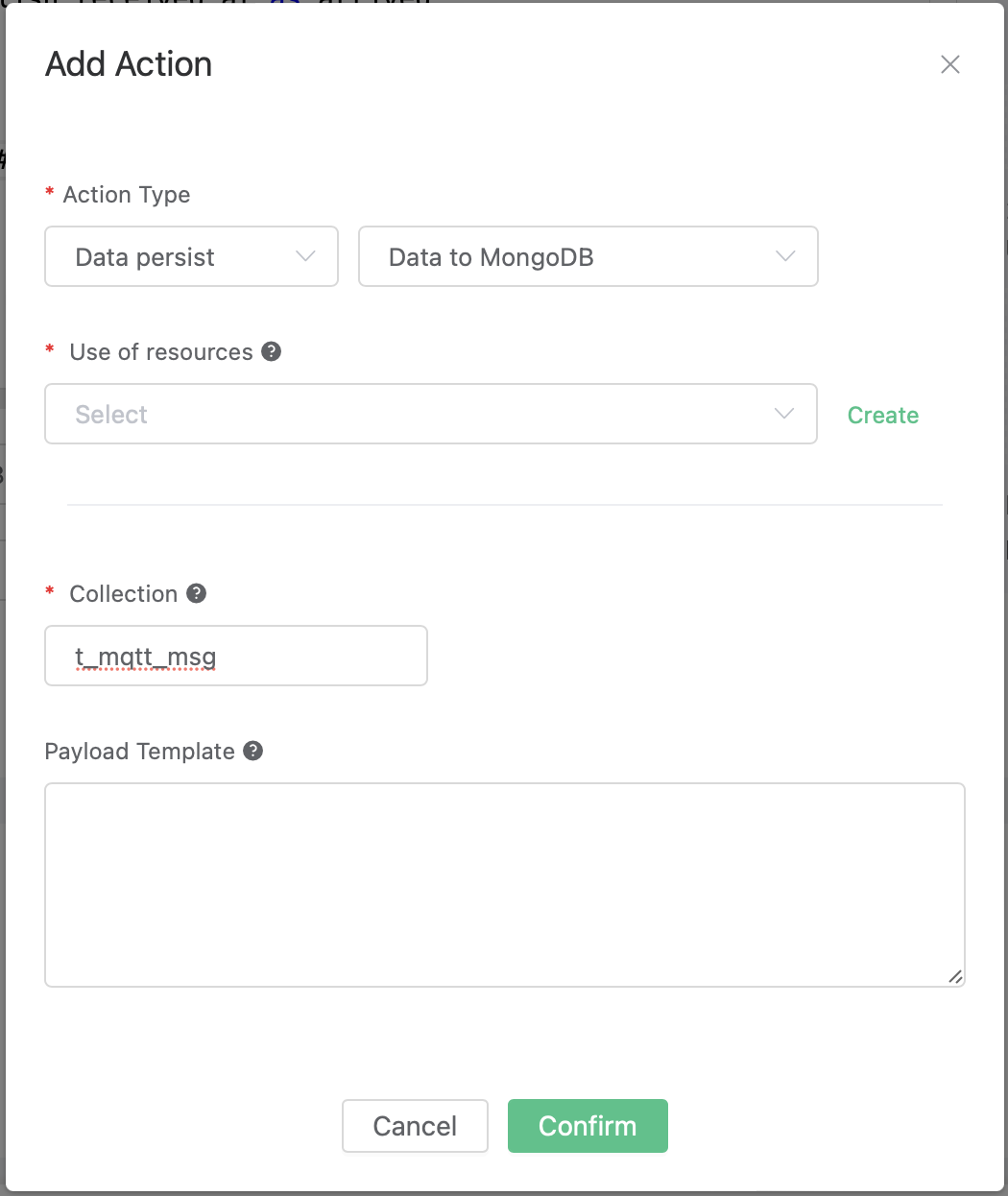Ingest Data into MongoDB
Set up MongoDB Database and Create Table
Set up a MongoDB database, and changes the username/password to root/public, taking Mac OSX for instance:
$ brew install mongodb
$ brew services start mongodb
## add user root
$ use mqtt;
$ db.createUser({user: "root", pwd: "public", roles: [{role: "readWrite", db: "mqtt"}]});
## change the config file to enable authentication
$ vim /usr/local/etc/mongod.conf
security:
authorization: enabled
$ brew services restart mongodbInitiate the MongoDB table:
$ mongo 127.0.0.1/mqtt -uroot -ppublic
db.createCollection("t_mqtt_msg");Create a Rule
Go to EMQX Dashboard, select the "rule" tab on the menu to the left. Then type in the following SQL:
SELECT id as msgid, topic, qos, payload, publish_received_at as arrived FROM "t/#"
Add an Action
Click on the "+ Add action" button under the "Action" tab, and then select "Data persist" -> "Data to MongoDB" in the pop-up dialog windows.

Fill in the parameters required by the action:
Two parameters are required by action "Data to MongoDB":
1). The Mongodb collection. Set it to "t_mqtt_msg" we just created.
TIP
From EMQX Enterprise 4.4.11 and 4.3.17, we can use placeholders in ${var} format for the collections.
2). Payload template. Payload template is the keys and values you'd like to insert into Mongodb when the action is triggered. In this example, we'll insert all the available fields we got from the rule SQL in JSON format, so we just leave the payload template empty.
::: MongoDB requires a JSON string when writing, so please ensure your template is a valid JSON format after all the placeholders are placed with the values. For example, you could write this in your template:
{"client": "${clientid}"}:::
3). Bind a resource to the action. Since the dropdown list "Resource" is empty for now, we create a new resource by clicking on the "New Resource" to the top right, and then select "MongoDB Single Mode":
Configure the resource:
Set "Database Name" to "mqtt", "Username" to "root", "Password" to "public", "Auth Source" to "mqtt", and keep all other configs as default, and click on the "Testing Connection" button to make sure the connection can be created successfully, and then click on the "Create" button..

Back to the "Actions" dialog, and then click on the "Confirm" button.
Back to the creating rule page, then click on "Create" button. The rule we created will be shown in the rule list.
Test the Rule
We have finished creating the rule, test the rule by sending an MQTT message to EMQX:
Topic: "t/mongo"
QoS: 1
Payload: "hello"Then inspect the MongoDB table, verify a new record has been inserted:

And from the rule list, verify that the "Matched" column has increased to 1:
